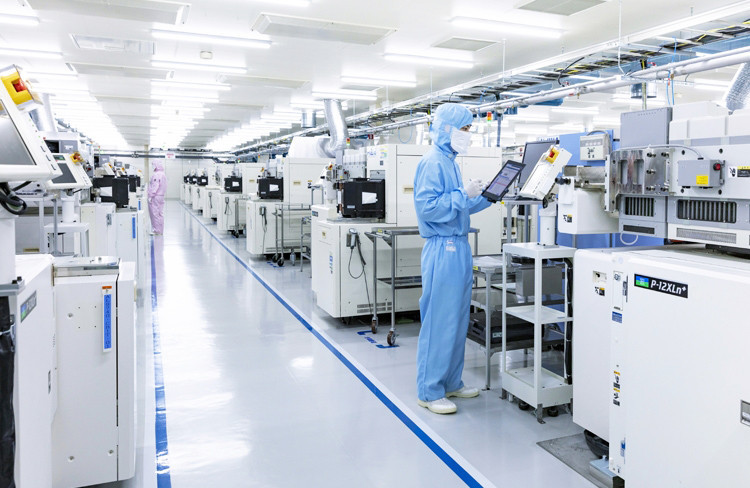
Japan’s semiconductor industry once thrived from the 1970s to the 1990s.
The production value of semiconductors on Kyushu Island alone, dubbed Japan’s “Silicon Island”, once reached a record high of 1,392.4 billion Yen in 2000.
However, the rise of South Korean manufacturers and cyclical market fluctuations caused the Japanese industry to decline steeply.
Against this backdrop, the Japanese government has launched a strategy to revive the semiconductor industry, aiming to boost total domestic semiconductor revenue from 5,000 billion Yen in 2020 to 15,000 billion Yen by 2030.
This strategy is divided into three phases. In the first phase, Japan will secure an advanced semiconductor manufacturing base to serve AI (artificial intelligence) and IoT (Internet of Things) domestically.
In the second phase, Japan will strengthen ties with the US to research next-generation semiconductor technologies. In the third phase, the country will realize and apply future technologies through global cooperation.
In reality, during the first three years of the strategy, starting in 2021, Japan allocated a budget of up to 4,000 billion Yen to support the development of its semiconductor industry.
These investments have begun showing early positive signs as Japan’s semiconductor industry regains its growth.
The production value of semiconductors on Kyushu Island alone reached 1,153.4 billion Yen in 2023, surpassing the 1,000 billion Yen mark for the first time after 16 years.
It is projected that from 2024 to 2030, the Japanese government’s budget for semiconductor industry development will continue to rise, reaching 10,000 billion Yen.
The thirst for workers
According to Ataguchi, a representative of the Kyushu Bureau of Economy, Trade, and Industry (under Japan’s Ministry of Economy, Trade, and Industry), with government support, there is currently a wave of investment in the semiconductor industry in Kyushu.
Surveys indicate that in the next 10 years, Japan’s semiconductor hub will attract equipment-related investments worth up to 6,200 billion Yen.
However, the semiconductor industry’s appeal to Japanese students remains low, compounded by the lack of industry information and practical training facilities.
As a result, Japan’s “Silicon Island” is forecast to face a severe shortage of semiconductor talents in the future.
Japan’s Ministry of Economy, Trade, and Industry predicts that from now until 2032, the semiconductor industry in Kyushu alone will lack approximately 1,000 workers annually in both short and medium terms.
The roles facing increasing shortages include machine operators and production engineers, as well as research and development (R&D) staff.
Amid the demand to grow the semiconductor sector, many Japanese companies, organizations, and educational institutions are working to diversify the industry’s workforce.
This is why many Japanese business delegations have visited Vietnam to explore and assess its semiconductor workforce, seeking collaboration opportunities.
Ataguchi stated that Japanese semiconductor companies need workers with a strong knowledge foundation in the fields of electricity, electronics, information technology, machinery, chemistry, materials, finance, and business.
For those in R&D positions, they need to have programming skills, knowledge of material engineering, and other practical skills and experience.
According to Ishikawa Isamu, Japan’s Deputy Ambassador to Vietnam, the semiconductor industry in the Kyushu region is entering a phase of robust growth. This area accounts for over half of Japan’s total integrated circuit production value.
He believes that collaboration in training human resources between Vietnam and Japan would benefit both sides, as Vietnam boasts a high-quality technical workforce, while Japan has a strongly developed semiconductor industry.
In recent years, Vietnam has collaborated with Japan to develop the semiconductor industry ecosystem and enhance enterprise capabilities through partnerships with Japan’s METI, the Japanese Embassy in Vietnam, and the Japan External Trade Organization (JETRO).
Regarding human resources, the National Innovation Center (NIC) has worked with Hiroshima University to identify and send Vietnamese talents to Japan for training in international bachelor’s programs in semiconductors. Collaborations with Japan have been implemented effectively, with substance, and have delivered significant value. In reality, quite a few Vietnamese engineers are currently participating in semiconductor production lines at factories in Japan.
Vu Quoc Huy, Director of the National Innovation Center, Vietnam is currently one of the countries with the fastest-growing digital economy in Southeast Asia.
Vietnam holds a strategic geopolitical position, possesses a youthful and abundant well educated workforce in technology, and has increasingly modern infrastructure investments, attracting more and more major global technology corporations, particularly in the fields of the semiconductor industry and artificial intelligence.
Binh Minh